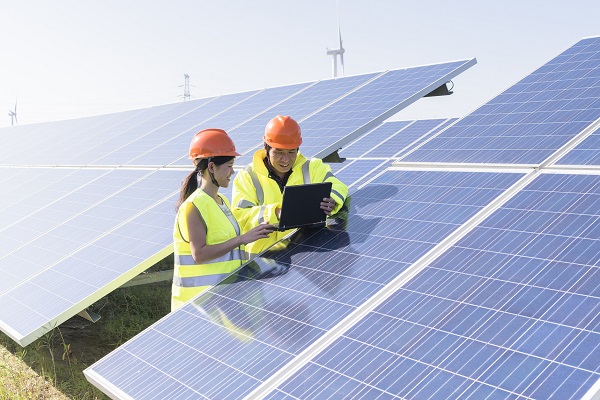Emerging markets: 4 reasons why they still matter
3rd February 2023 08:54
by Dan Magnusson and Tom Harvey from Aberdeen
Emerging markets have been out of favour for some time, but there are four reasons why they need to be on the radar for anyone looking to diversify and future-proof a portfolio.

Emerging markets (EM) have been out of favour for some time. This asset class, which encompasses a diverse range of countries and economies, has suffered amid heightened geopolitical uncertainty, a strong dollar and the economic disruption from China’s now abandoned ‘zero-Covid’ policy.
While short-term factors have diminished EMs’ appeal for many investors, here are four reasons why longer-term structural change means they need to be on the radar for anyone looking to diversify and future-proof a portfolio:
Energy transition
Many EMs are associated with the production of soft (coffee, wheat, soybeans) and hard (metals, oil, gas) commodities. The global energy transition – a shift from carbon-intensive fuels to low-carbon alternatives – will put EMs at the centre of delivering key commodities for many more years.
Industrial metals, such as copper, zinc, aluminium and nickel, will be critical this century. Countries in Latin America and southern Africa are key producers. Demand for some precious metals, such as platinum and palladium, will also increase due to their role in reducing carbon emissions in car engines.
China, whose companies account for almost one-third of the investable EM universe, is a world leader in some of the new technologies – solar capacity, batteries and electric vehicles – that lie at the heart of the sustainable-energy revolution.
US climate regulation
Last year’s Inflation Reduction Act (2022) was the biggest piece of US federal climate legislation in history – worth almost US$400 billion over 10 years.
One academic study estimates it will lead to reduced US emissions by some 32% to 42% below 2005 levels by 2030 – between 5 and 15 percentage points more than would have been achieved without it.
Its focus on energy security and tackling climate change swings the spotlight onto areas such as nuclear power, hydrogen and other forms of cleaner power. It will also put into place long-term incentives for more investment in solar, wind and energy-storage technologies.
All this will have significant implications on the demand for commodities – many produced by EMs – that are linked to renewable energy and the energy transition.
China's back in business
Late last year, China quietly abandoned its ‘zero-Covid’ policy that had caused severe disruption to its domestic and international economic activity.
Despite rising geopolitical tension, the world’s second-largest economy must play a key part in any global recovery (short-term inflation concerns aside). It’s especially important to other EMs given China’s role as a major consumer of commodities and services, and its role in the global supply chains in which EMs form a vital link.
That said, it’s hard to predict the precise short-term effects on global demand of China’s return. It’s like driving through a dark tunnel and seeing the light ahead. However, it’s still a shock when you emerge into the sunlight, no matter how much you anticipate it.
Growing EM demand
Domestic consumption has become a bigger driver of EM economic activity within the last decade. More recently, consumer demand has undergone a process of ‘premiumisation’ – as wealthier consumers seek out higher-quality products and services.
This domestic consumption has also driven the rise of consumer discretionary businesses, such as the big Asian e-commerce companies that are home-grown equivalents to many of the US tech giants.
There are lots of well-known companies in this space, particularly in countries such as China. While recent regulatory obstacles may have dampened their attractiveness, these firms will continue to be an important driver of EM growth in the years ahead.
Final thoughts
Even though EM assets haven’t performed very well over the past couple of years (mainly because of poor sentiment around China), selected commodities linked to food and energy provided a few bright spots in the markets last year amid conflict-induced shortages.
The short- to medium-term outlook for commodities could be supported by a weaker dollar since the start of this year (as many key items are traded in dollars). Supply-chain disruptions linked to the conflict in Ukraine, and renewables investment to tackle the climate crisis, may also help.
But over the longer term, the role of EMs in the supply of key commodities that will support the energy transition, as well as a source of demand for global goods and services, will ensure their growing importance in the systemic changes that are under way.
Dan Magnusson is Senior Director, ETFs at abrdn and Tom Harvey isSenior Equity Specialist at abrdn
ii is an abrdn business.
abrdn is a global investment company that helps customers plan, save and invest for their future.
These articles are provided for information purposes only. Occasionally, an opinion about whether to buy or sell a specific investment may be provided by third parties. The content is not intended to be a personal recommendation to buy or sell any financial instrument or product, or to adopt any investment strategy as it is not provided based on an assessment of your investing knowledge and experience, your financial situation or your investment objectives. The value of your investments, and the income derived from them, may go down as well as up. You may not get back all the money that you invest. The investments referred to in this article may not be suitable for all investors, and if in doubt, an investor should seek advice from a qualified investment adviser.
Full performance can be found on the company or index summary page on the interactive investor website. Simply click on the company's or index name highlighted in the article.